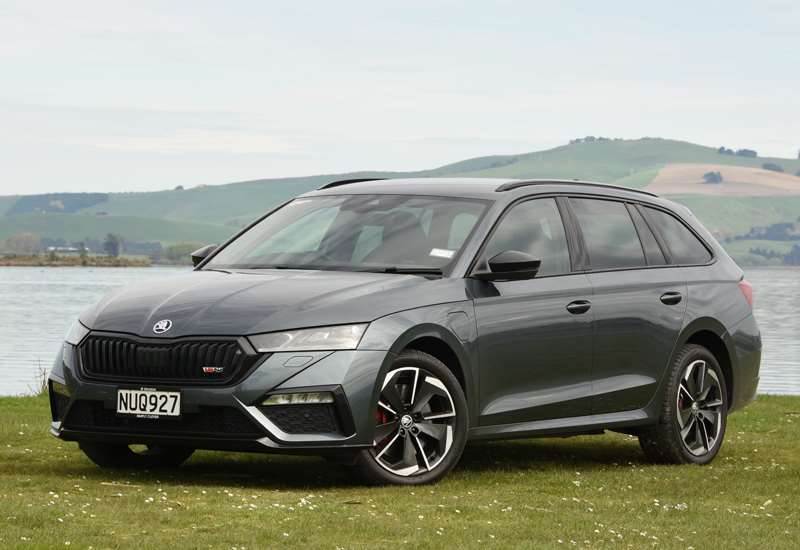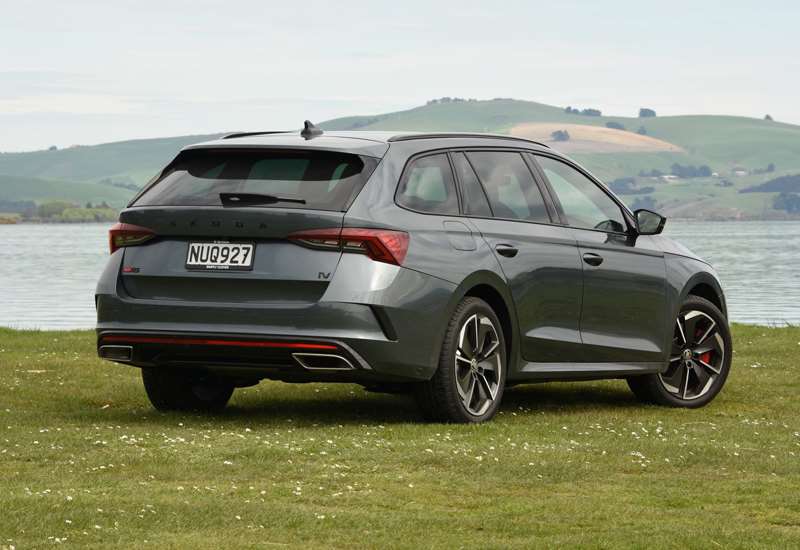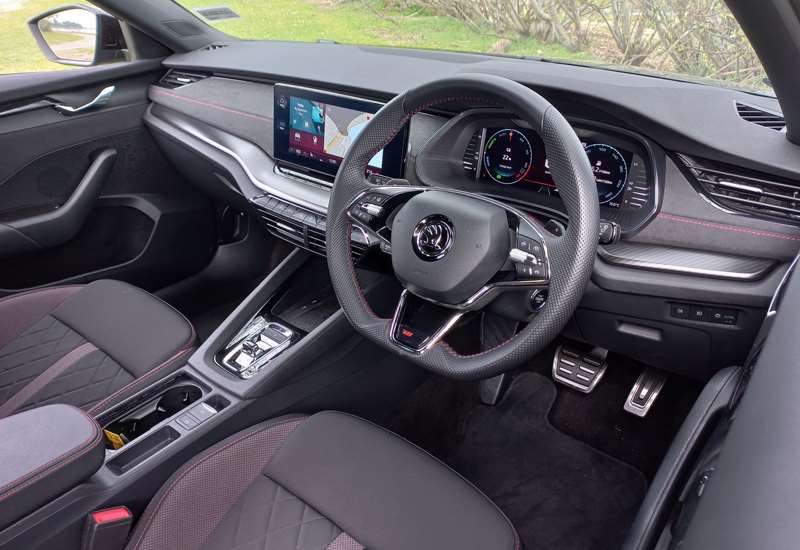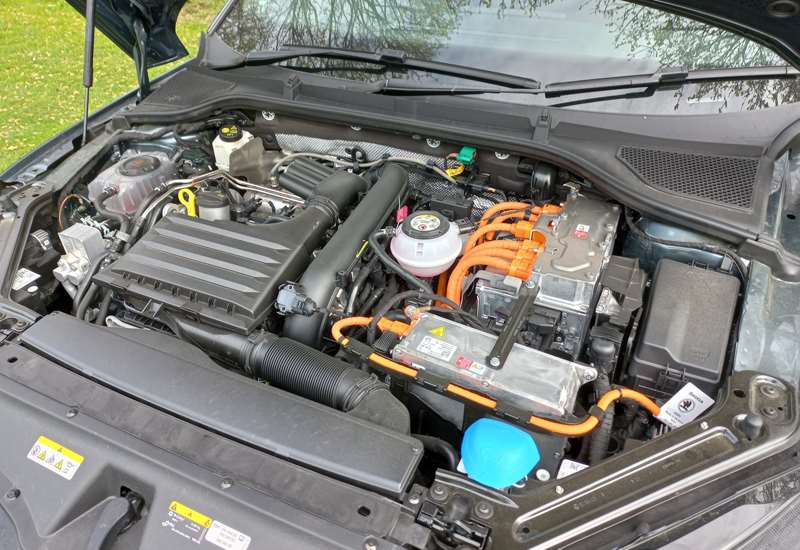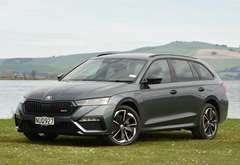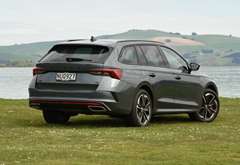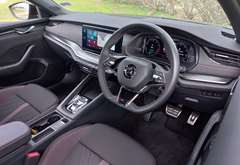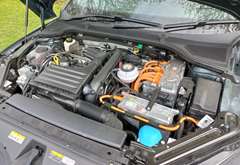David Thomson tries the latest addition to Skoda’s Octavia range and finds no shortage of appeal.
What’s new?
The fourth generation Skoda Octavia wagon has been on sale here since early 2021, but the addition of plug-in hybrid options to what was initially a pure petrol line-up came only a few months ago.
As is the case with Skoda’s other recent plug-in arrival, a variant of the Superb, the designation ‘‘iV’’ is used to differentiate the new arrival from other vehicles in the range.
It’s a designation to get used to, for iV is rolling out as a sub-brand to denote electrified Skoda cars into the future. Within it, the ‘‘V’’ always stands simply for vehicle, while the ‘‘i’’ is a matter of interpretation. Innovative, intelligent, inspiring, iconic, individual and intuitive are all suggested by Skoda as possible meanings.
As with other Octavia family members, the Octavia iV is built around the now ubiquitous Volkswagen Group MQB platform. The models it underpins include the Audi A3 and VW Golf, along with two recently reviewed; the Skoda Kodiaq and VW T7 Multivan.
Combining a 1.4-litre turbo-petrol engine with 13kWh battery pack-driven electric motor, the plug-in hybrid drivetrain is likewise familiar with VW Group model lines.
It’s available in two guises for the Octavia iV. In standard 150kW/350Nm form it powers the $65,990 Octavia Style iV. A more powerful 180kW/400Nm deployment is preferred for the $72,990 Octavia RS iV. In each instance, a six-speed DSG transmission delivers power to the front wheels, and battery-only range is rated at 60km.
Both Octavia iV variants qualify for a $5750 rebate under the Clean Car Discount scheme, which closes the price gap to the pure-petrol $51,990 Octavia1.4 TSI Style and $60,990 2.0 RS.
In using the sport-focused RS label on the flagship plug-in as well as the pure-petrol Octavia, Skoda is making a point about equivalence, and it’s no coincidence peak power is 180kW on both vehicles. The iV holds the edge for torque (at 400 rather than 370Nm) but the pure petrol is quicker against the stopwatch, pulling out a 0-100kph sprint in 6.5sec, compared with the RS iV’s 7.0sec.
The RS iV was the variant supplied for this appraisal.
What comes as standard?
Equipment levels mostly mirror petrol Octavia models.
The standard safety set-up includes adaptive radar cruise control, active lane, side and front technologies, tyre pressure warning and driver attention alerts, and front, side, curtain and knee bags. The RS iV adds a front centre airbag to prevent injury-inducing interactions.
Creature comforts and convenience features for the Style iV include keyless entry dual zone climate control, power-adjusting front seats, a heated multi-function steering wheel with paddle shift controls, and even a courtesy umbrella mounted in the driver’s door. A 10-inch centre touchscreen is home base for an infotainment set-up that includes a digital main instrument cluster and an eight-speaker sound system. There’s wireless smartphone mirroring, and five USB plug points. The RS features sports seats, a sports steering wheel, alloy pedals, and carbon and alcantara trim accents.
There is an RS Plus Package on offer too. For $6450, the package adds leather upholstery, a head-up display, tri-zone climate control, 19-inch alloys, and adaptive suspension.
What’s it look like?
Internationally, the current Octavia is available in both liftback and wagon guises, but only the wagon is offered here.
It’s smart-looking and eye-catching too because mid-sized family wagons are relatively rare these days, having been almost usurped by equivalent, higher-riding sports utilities.
The clean-lined Skoda family look is apparent, notably upfront with the shaping of the grille and creasing of the bonnet line. However, the Octavia cuts a notably stylish dash within the Skoda line, with a more chiselled and dynamically interesting look than other models in range.
The test car’s status as a plug-in hybrid wasn’t exactly shouted from the rooftops: the only exterior visual cues are a small ‘‘iV’’ badge on the tailgate, and the electric charge port, mounted just below the A-pillar on the passenger’s side.
Being the flagship variant, the test car sported plenty of dress-up kit including vRS badging front and rear, twin exhausts, gloss-black finishes for the grille, window trims and roof rails. It also has matrix bi-LED headlights, and sat on 235/45 tyres fitted to 18-inch dark-alloy wheels.
What’s it like inside?
It’s worth noting the iV’s 13kWh battery pack and associated ancillaries incur a 150-litre penalty in boot space. The good news is that 490 litres of cargo space is still available behind the back seats, expanding to 1555 litres when the seats are folded down. The back seats are comfortable and supportive, with excellent headroom and decent legroom.
Upfront, there’s plenty of space in a cabin that is tastefully decorated with dark upper and lower trims and a clean-lined dash and centre console. The dash is notable for its soft touch upper surfaces and finishes that include carbon and suede.
A stubby toggle-style gear selector protrudes from the centre console, while the middle of the dash is dominated by a landscape-format 10-inch touchscreen. A small row of buttons below the screen are the main concessions to a system that relies primarily on touchscreen and voice-control operability. The main instrument cluster is also fully digital and is extensively configurable via controls on the multi-function steering wheel.
As with all such systems, it takes time to fully master the Octavia’s digital interfaces, but most of them were intuitive from the get-go. A little foible I didn’t especially like is the positioning of the cruise control interface on a separate stalk, tucked out of sight behind the left-side steering wheel spoke.
That gripe aside, I found the layout off key instruments and controls quite straightforward. The driving position is very comfortable, too, and the combination of thin door and side pillars and large windows ensures great visibility.
What’s it like to drive?
A key reason for choosing the iV RS over the conventional petrol iV is the ability to engage in carbon-zero motoring for extended periods of time.
As well as four regular drive modes (eco, normal, sport and individual) three PHEV drive modes are available. The two most easily selectable are eMode — the pure electric mode — and Auto mode — in which the car itself varies the electric-petrol mix. It’s also possible to set up the system so the petrol engine is prioritised not only for powering the vehicle, but recharging the battery to a driver-determined level as well.
The standard cycle rating of 60km of range on battery power alone translated (depending on terrain) on a reliable 40km-50km of real-world battery-only range around town. Combined with an easy ability to fully charge the battery overnight on a three-point plug at home, this comfortably met my daily commuting requirements.
While eMode is needed to ensure pure-electric motoring, Auto mode is the best option for anything but a short hop beyond the city limits. The iV RS matches its pure-petrol counterpart for power and boasted a little more torque.
This balances against the extra weight incurred by the battery pack to produce broadly similar performance. The iV delivered a more immediate response from low down but less fanfare at the top end.
Aural refinement is excellent whisking around town under electric power alone. Other than over coarse chip surfaces, where tyre roar is quite intrusive, the cabin is quiet at highway speeds.
Helped by the iV RS having the same progressive steering and the XDS+ front differential Lock functions as the conventional RS, handling through twists and turns is good too. That said, as well as being heavier, the iV RS rides 15mm higher with its suspension in a more comfort-oriented tune than the pure-petrol RS. This means it plays a clear second fiddle in terms of incisive handling, albeit with the counter-balancing advantage of delivering a more cossetting experience during extended highway motoring.
Forking out for the RS Plus Pack would close the gap as it adds in adaptive suspension but the ride-handling balance of the iV RS is already nicely struck for everyday use.
Verdict
I’m not fully convinced the RS badge is appropriate for the Octavia iV flagship, for it is more accomplished all-rounder than fully-focused sports machine. But it’s an impressive addition to the Skoda range, being practical, well-appointed, engaging to drive, and thoughtfully attuned to the low-carbon desires of today.
- David Thomson
